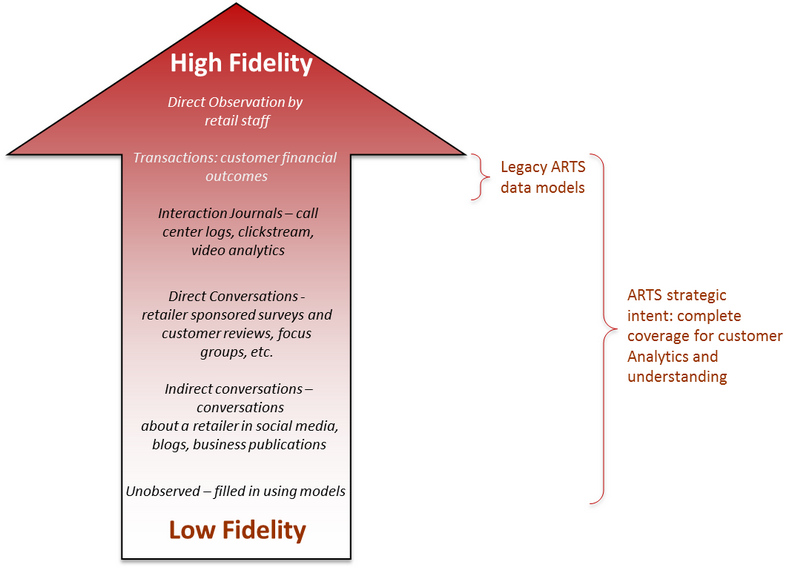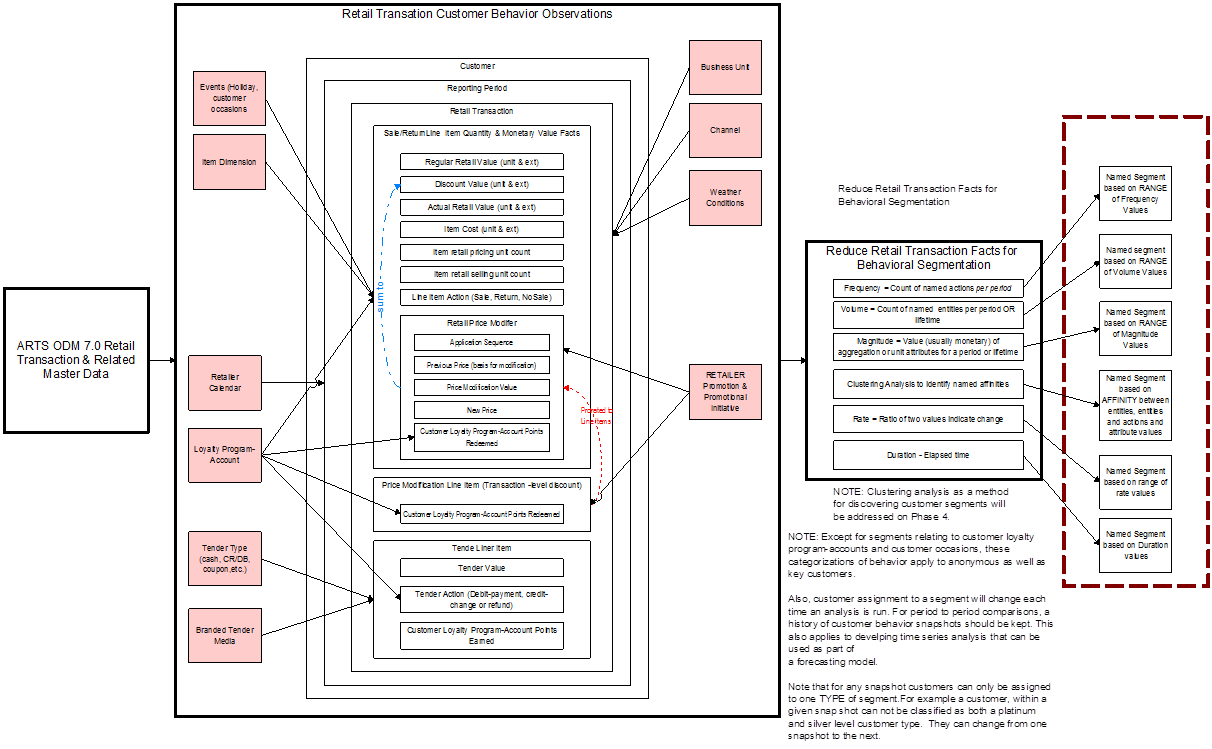Subject Area Concepts Consumers and customers may be classified and described two ways. Independent Consumer-Customer Characteristics and Segmentation The first way is based on customer innate characteristics like demographic, psychographic and geographic traits that exist independently of any observed customer behavior. In ARTS these are called Customer Segment Independent Characteristics and are represented in the Logical 07030 subject area. Dependent Consumer-Customer Characteristics and Segmentation The second way of describing and classifying customers is based on their behavior - which is the purpose of this subject area. Behavioral customer segmentation is based on what customers do and what they say. Behavioral characteristics are dependent on customer actions which are taken in response to things a retailer does to influence behavior. From an analytic point of view that makes customer behavior dependent on retailer initiatives. Dependent behavior is a generalized term for classifying entities that identify, name, define and describe observed customer actions and relate them to retailer actions. Understanding Customer Behaviors and Relative Information Fidelity The reason for addressing customer behavior based on retail transactions is that they reflect what customers actually do. In terms of information fidelity (i.e., its reflection of objective reality) observed actions are more valuable as a basis for understanding customer behavior than surveys (what customers say). Also, ARTS already has a rich collection of retail transaction entities and attributes. This rich collection of information places customer purchasing behavior into a business context based on retailer product, pricing, promotion, place and relationship which reflect the retailer's business strategy. Figure 18 - Relative Fidelity of Customer Information Based on Source 
Entity Model Overview The entity diagram shown here has a pink area which includes RetailTransaction entities that describe customer behavior. Customer behavior is expressed in terms of customer purchasing and return actions, tender preferences, response to promotions, loyalty redemption and other observations tied to transactions. The outer light blue area contains entities that define the context within which the observed customer transaction behavior takes place. It places the observed transactional behavior into a setting that looks at product, price, promotion, place (location and channel) and relationship (customer loyalty). This setting or context is the basis for associating customer behavior (dependent attributes) to retailer demand creation initiatives. ARTS provides a comprehensive set of transactional and contextual entity types. The Logical 07040 subject area presents a distilled view aimed at highlighting the linkages between transaction-based behavioral phenomena and the retailer context within which those phenomena are observed and captured for subsequent analysis and understanding. Customer Behavior and Context As Basis for Customer Analytics and Insight The diagram shown below illustrates how retail transactions and retail transaction context are used to support the derivation and analysis of customer behavior. The operational data model provides the raw fact and master data which is subsequently aggregated for analysis. The aggregated data is explored using data mining and statistical methods to cull out patterns of behavior. The behavioral patterns are used to further explore and develop casual models that tell retailers what factors (both independent characteristics of consumers and retailer initiatives) influence customer actions. Understanding the degree of influence (sensitivity analysis) helps retailers choose the most efficient and effective strategies and the customer types they are most successful at serving. This analytic concept is the basis for the customer extensions added to the ARTS Data Model in Version 7. Figure 19 - Conceptual Model Of ARTS Data Model Support for Customer Analytics 
This diagram highlights the enormous amount of information about customers and their behaviors that is derivable from retail transactions. It provides a deep dive into the retail transaction components that are used to derive different aspects of customer behavior. For example, it makes customer payment preferences and habits visible by exposing tender type as an analytic element. The conceptual framework behind the behavioral view represented in the Logical 07040 subject area is laid out in this diagram. It also sets the stage for further development of the ARTS Data Warehouse and Key Performance Indicators. | 
